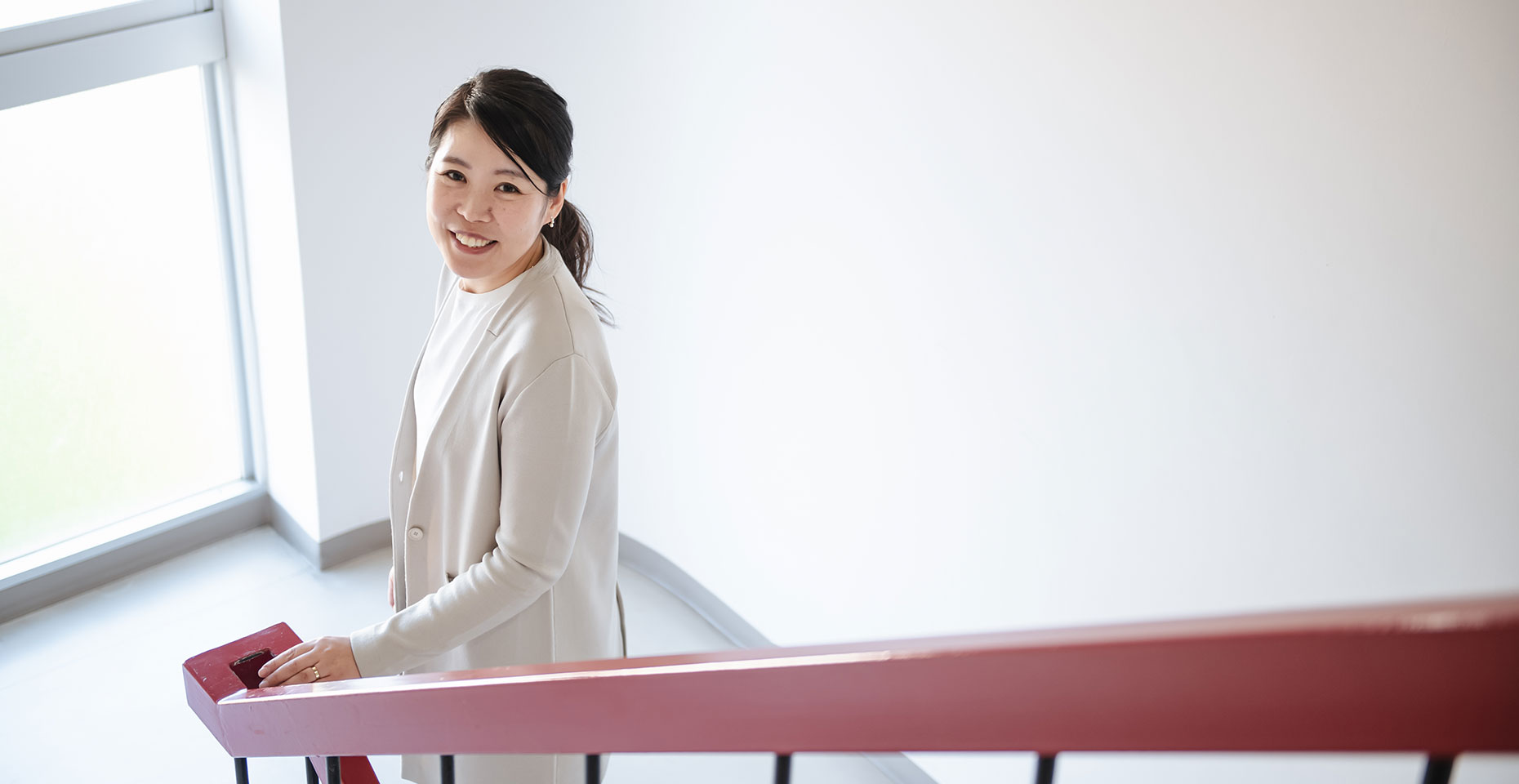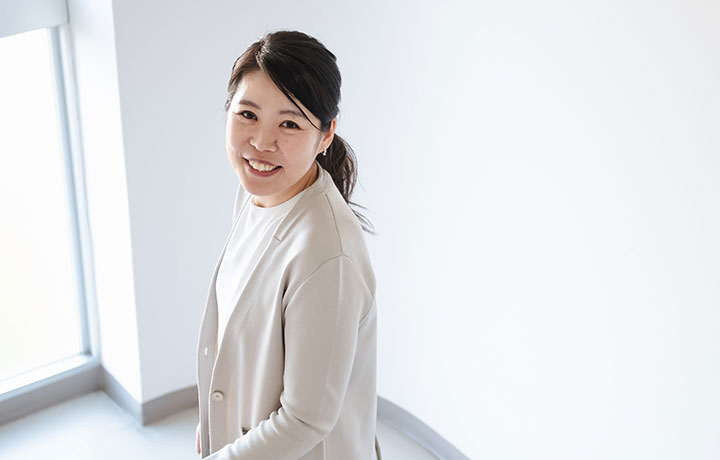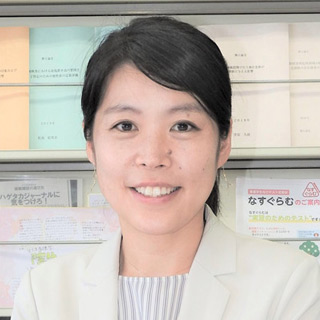Meet Ayumi Amemiya, our researcher at the Graduate School of Nursing, who skillfully employs technology to tackle medical challenges head-on. In this interview, we spotlight her mission to create a ‘society where every individual experiences dignity till their last breath.’ By ushering in digital transformation (DX) into nursing and pioneering what it calls ‘nursing of the future,’ we spotlight her efforts. Through our conversation with Lecturer Amemiya, we explore her groundbreaking research shaping the future of nursing science and engineering. Gone are the days when nursing was solely associated with ‘dedication.’ Now, envision a future where all stakeholders find greater fulfillment with her team!
The Profoundness of Nursing Learned from Volunteer Work
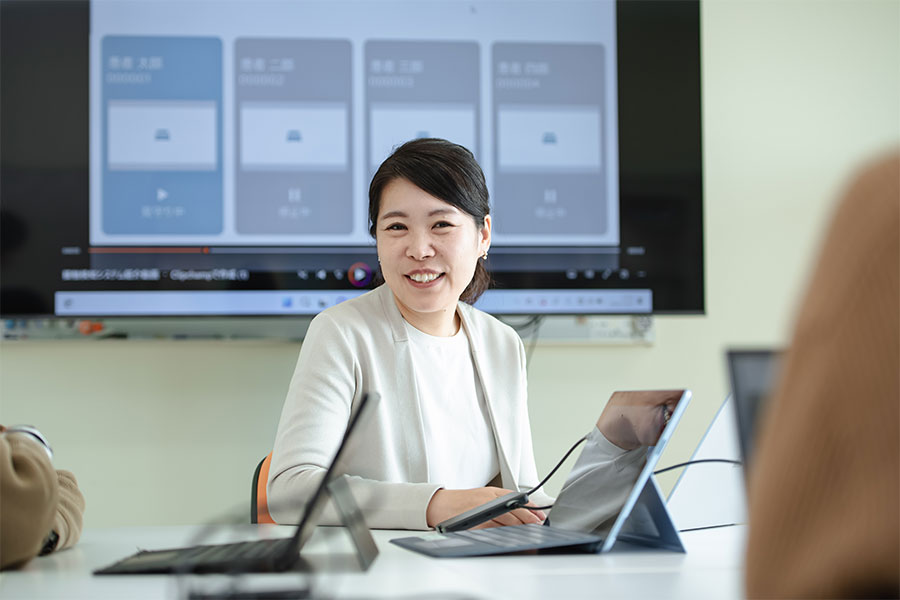
It all began during her second year of high school when she got involved in nursing volunteer work. That experience introduced her to the words that would ultimately shape her perspective on nursing.
Due to the impact of the employment ice age, I became interested in stable professional jobs, particularly in the medical field. I decided to volunteer as a nurse assistant, where my main task was to help patients change clothes. Initially, I thought my job was simply to assist with changing clothes, but a nurse asked me, “Do your patients have difficulty changing clothes by themself?” She then explained, “The essence of nursing is to identify and utilize the patient’s strengths.” I realized that nursing aims to bring out the best in patients, even in daily activities. Deeply impressed by this approach, I decided to pursue a degree in Nursing.
Unlocking new possibilities through clear and compelling data
I discovered the joy of research during my undergraduate graduation project. My chosen theme, ‘the relationship between international students visiting Japan and their stress,’ was inspired by my own experience studying abroad. In hindsight, I realized I opted for a data analysis method rooted in my personal experiences.
In nursing research, we often evaluate subjects’ feelings (subjectivity). However, I have always been fond of numbers and wanted to present objective data. So, I designed a questionnaire where responses were given in numerical values. The statistical analysis revealed that homesickness is a stronger stressor than other stressors. This was the moment when my love of mathematics merged with nursing, opening up new possibilities.
Delving into foot care to improve the Quality of Life for patients with diabetes
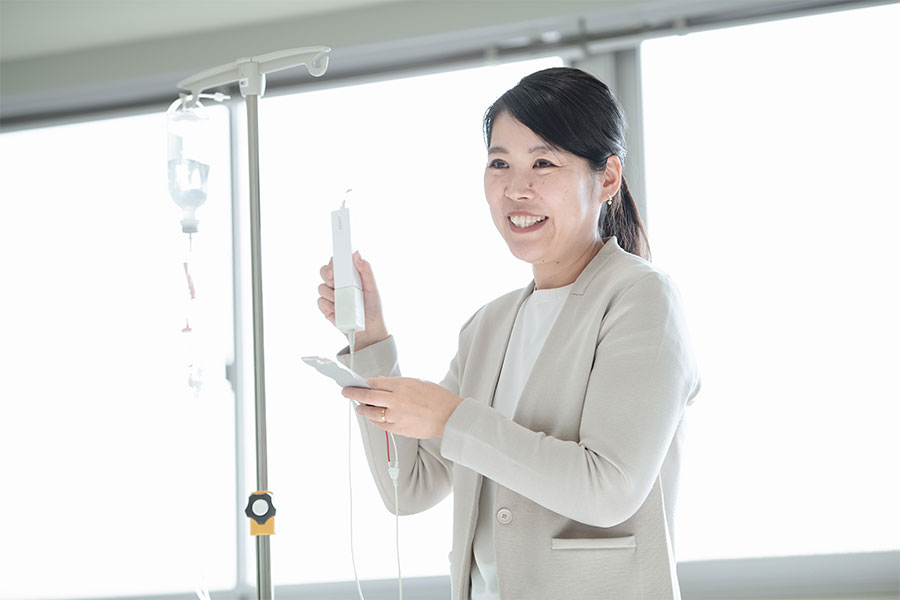
At first, she envisioned pursuing graduate school, but wisely chose to heed the advice of gaining clinical experience beforehand. Taking this advice to heart, she secured a position at the University of Tokyo Hospital. It was there that her interest in diabetes, which manifests in numerous complications, took root.
Diabetes comes with its share of complications, but with proper care, many are preventable. Nursing offers a range of approaches to address these challenges. One particularly troublesome complication, especially prevalent among diabetic patients, is foot ulcers. Once they develop, these ulcers are tough to heal and often recur. What’s worse, they can progress to severe stages without detection, potentially resulting in lower limb amputation.
Preventing these ulcers is crucial, and nurses play a pivotal role in foot care. That’s why I started researching foot care and ulcer prevention while on my job*. I initiated a questionnaire survey to find out nurses’ perspectives on foot care, aiming to clarify the direct factors at play.
*The University of Tokyo Hospital has an in-hospital research system that allows employees to conduct research as part of their duties. This setup enables them to receive support from graduate school faculty.
After working tirelessly on the frontline and becoming the youngest to ever win the Best Staff Award at the University of Tokyo Hospital, she transitioned into the world of research.
As I gained more clinical knowledge, my interest in research grew, driven by a desire to solve field problems based on what I had gained. In my seventh year as a nurse, I had the opportunity to join the lab of a professor who had previously guided me through in-house research. This allowed me to enter graduate school. The lab was a fantastic environment, featuring professors from nursing, engineering, and science disciplines. It offered a unique chance to explore science, engineering, and manufacturing from a nursing perspective. With a focus on practical research that could be applied in real-world settings, it was the perfect fit for me.
Scientifically analyzing patients’ feet with gait sensors
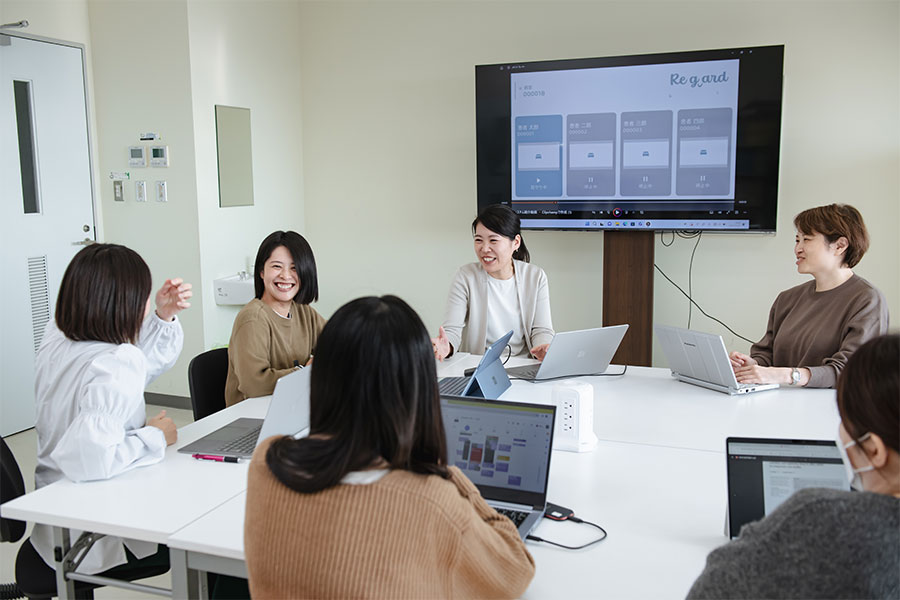
In graduate school, she deepened her research on the causal factors of callus formation, which are precursors to ulcers. Her findings were published in one of the leading international journals on gait.
Calluses often develop on the plantar surface of the feet in individuals with diabetes, increasing the risk of ulcers by more than ten times. The primary causes of calluses and ulcers are attributed to the ‘pressure’ and ‘sheer stress’ due to back-and-forth and side-to-side movements exerted on the plantar surface during walking. While pressure has been extensively measured, sheer stress has largely been overlooked. Therefore, my study aimed to simultaneously measure both pressure and sheer stress. Due to the scarcity of thin sensors capable of measuring the misalignment of each part of the plantar inside the footwear, I had to start by developing a measurement system.
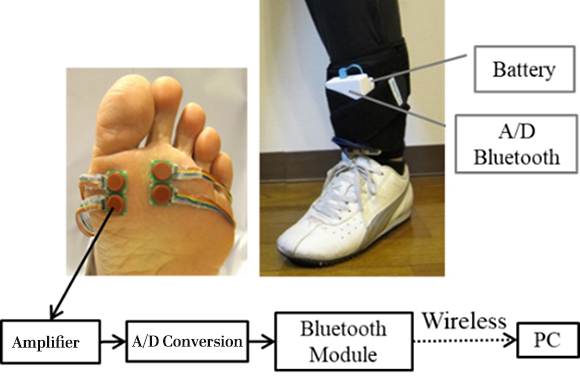
To achieve results within a limited time and cost, I opted for a method that combines commercially available sensors. I had patients with diabetes wear a custom-built measurement system to measure and analyze the forces exerted on their plantar while walking. This allowed me to determine the footwear conditions and walking styles that are more likely to cause calluses.
Another interesting finding was that the causes of calluses vary depending on their location. For example, I discovered that a smaller knee bending angle results in a reduced kicking motion, which increases pressure and sheer stress around the base of the big toe, making it easier for calluses to form. Based on this finding, I proposed that footwear with rocker soles, which facilitate the kicking motion, would be suitable for individuals looking to prevent ulcers.
Sensor technology that protects the dignity of patients and medical professionals
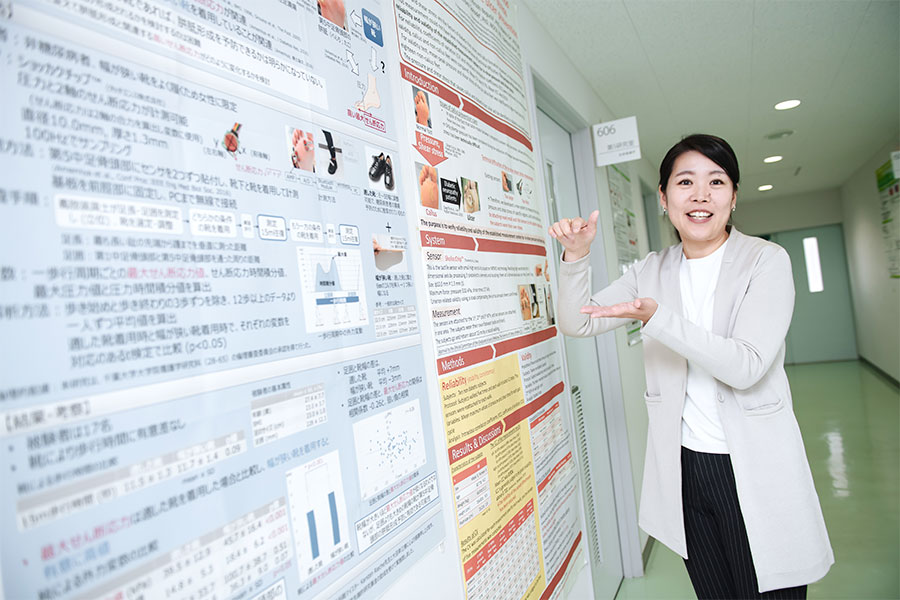

After obtaining her doctoral degree, she became an assistant professor at Chiba University, where she began developing a sensor that prevents ‘self-removal,’ a significant challenge in nursing care settings.
When I went to visit my hospitalized grandmother, I was shocked to find that she was physically restrained. Although she hadn’t been diagnosed with dementia yet, hospital staff worried she might remove her IV drip. At the university hospital where I worked, physical restraints were used only as a last resort and for the minimum time necessary, so I was surprised to see them used in this situation.
In community hospitals, where staffing is limited and care is often provided by non-nurses, immediate response to patients removing IV tubes is not always possible. As a result, physical restraints are often seen as unavoidable. On the other hand, physical restraint can accelerate the progression of dementia, creating a vicious cycle that increases the need for nursing care. This not only harms the dignity of the patients, but also affects their dignity and job satisfaction, causing them to lose pride and confidence in their work.

Seeing this situation, I started to think about ways to reduce the use of restraints. I focused on the self-removal of IV drips, which accounts for over 70% of restraint cases, and developed a thin, sheet-type sensor system that detects when a hand touches the area around the IV needle. This sensor can be applied over a bandage and is designed to minimize the sensation of a foreign object and the risk of skin disorders. Clinical trials will begin in March 2024, and if proven effective, the sensor will be put into practical use in collaboration with companies.
‘Point of Care AI’: Transforming the future of nursing care
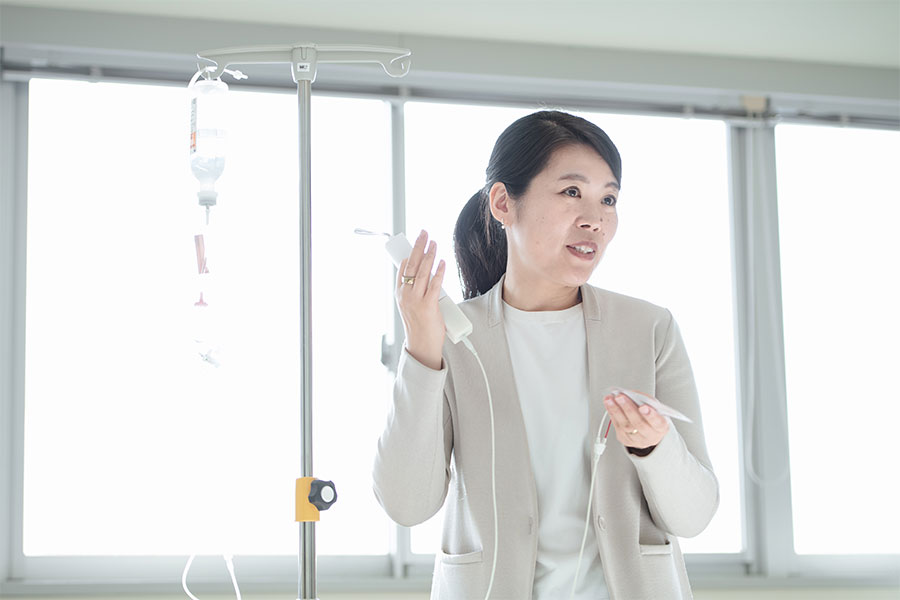
A simple sensor has the potential to alleviate the burden on both field workers and patients exhausted by physical restraints and constant monitoring. It is exactly Digital Transformation in the nursing field. Yet, there is one aspect of caring for her grandmother that she regrets.
My grandmother had always expressed her desire to return home, but as her dementia progressed, living alone became increasingly challenging. Eventually, she had no choice but to move into a care facility. I often find myself wishing I had recognized and addressed her cognitive decline earlier―a lingering regret. Because recent advancements show that early detection of dementia, even in its Mild Cognitive Impairment (MCI) stage, combined with appropriate interventions, can slow down its progression. If such measures were more widely available, perhaps more individuals could enjoy their time at home rather than in care facilities or hospitals.
A quest to utilize smartphones and wearable devices for detecting MCI―a pioneering stride in the ambitious project ‘Point of Care AI’
I have initiated research to develop ‘Point of Care AI,’ a biological sensing system capable of early detection of dementia. This system utilizes commercially available smartwatches and an accompanying app to collect data from individuals’ daily activities, identifying declines in cognitive function and prompting preventive measures.
What distinguishes this study is its dual focus: not only does it assess the risk of cognitive decline, but it also collects data on caregiver fatigue. Even when dementia patients still have the ability to remain at home, many cases arise where caregivers reach their limits due to fatigue, necessitating the patient’s transition to a care facility. Currently, I am conducting verification studies with healthy volunteers to determine whether the targeted data can be successfully obtained.
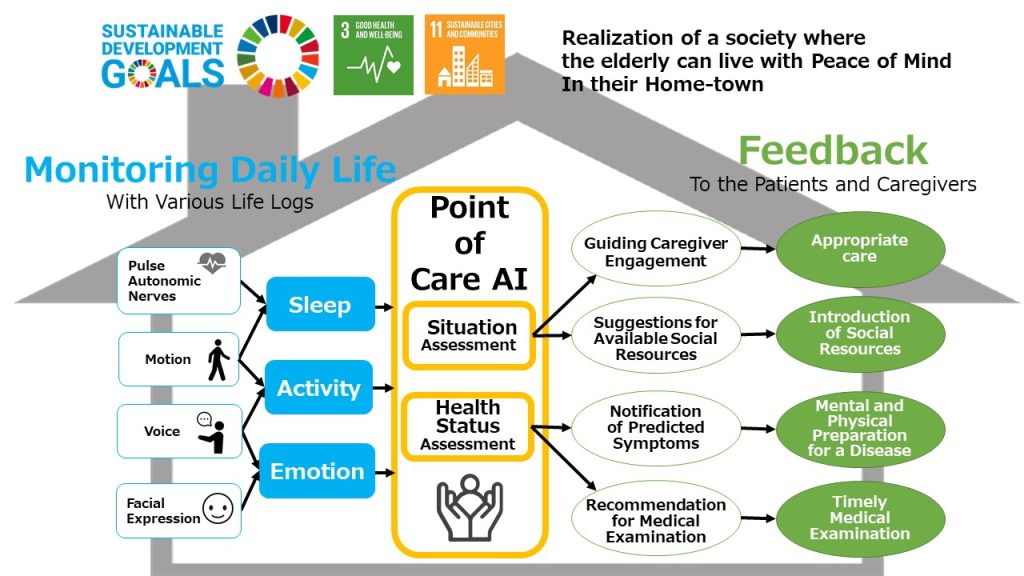
Nursing care is a common issue worldwide. If this system becomes widespread and a supportive environment is created for both those at risk of dementia and also their caregivers, I believe that both groups will be able to lead happier lives. Through my research, I aim to create a society where people feel they are living their happiest lives possible, right up until the very end.
Creating a future of nursing through nursing and innovation
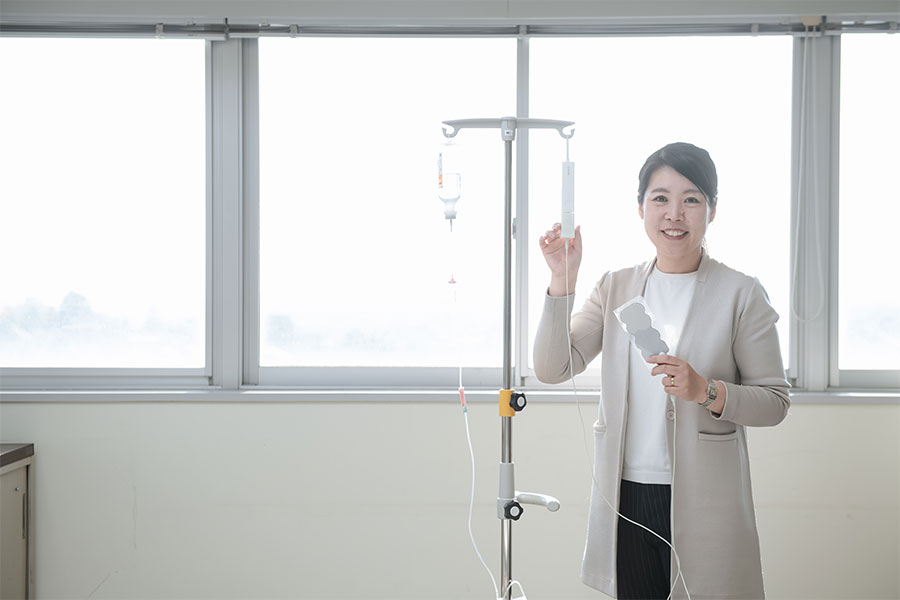
Her dedication to pioneering ‘new nursing’was highly acclaimed, earning her the Chiba University Award for Distinguished Researcher in 2023. “I still have plenty of ideas,” she says with a radiant smile.
I am now exploring the virtual world to address the issue of dementia-related wandering. I envision creating a digital environment where everyone who faces physical and mental challenges going outside, including those with dementia, can feel at ease.
Nursing Science and Engineering is a forward-looking field where collaboration with other disciplines can lead to innovative solutions to problems that nursing alone can’t solve. I encourage students to continuously seek out what they love and are passionate about and to push forward. Lower the barriers to entry as much as possible and take the first step. You will learn more than you imagined, and your ideas could revolutionize healthcare. Why not work towards creating the society you envision through ‘nursing and innovation’?
● ● Off Topic ● ●
I imagine there aren’t many nurses who create tools and devices themselves.
I actually combined off-the-shelf items to make them!
Designing circuits seems pretty complicated. How did you manage it?
I went to Akihabara*, asked for advice from the shop staff, bought parts like the base and cables, and then put it all together myself.
*Akihabara, also known as ‘Electric Town,’ is a vibrant district in Tokyo famous for its bustling streets lined with electronics shops, anime stores, and gaming arcades.
Recommend
-
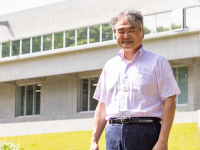
The reciprocity of life: The interactive relationships between people, plants, and the environment
2023.05.19
-
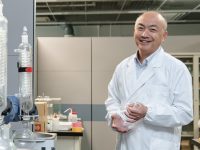
Unlocking Untapped Urban Resources: Driving Carbon Neutrality through Life Cycle Assessment
2023.06.29
-
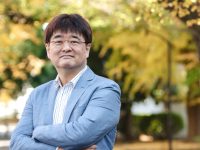
The Enigma of Time Perception: The Psychological Time Warp of ‘Tachypsychia’
2024.04.12


